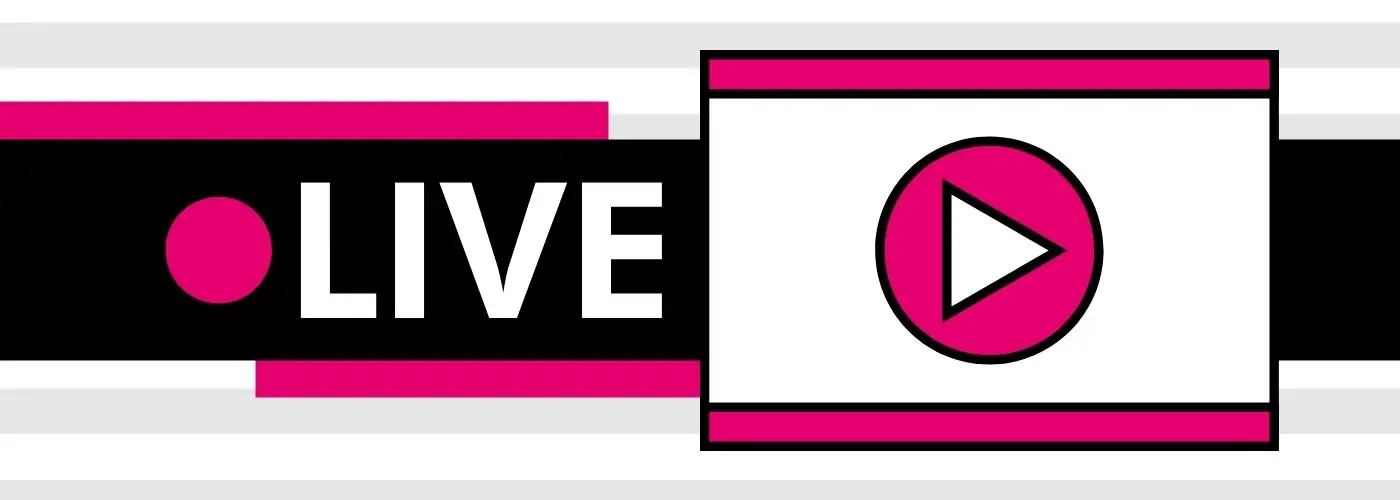Let’s Talk About Live Captioning
Updated: July 6, 2023
Live Captioning with 3Play Media [Free Webinar]
One of the most exciting things for the 3Play Media team is developing a new product. Recently, we were thrilled to announce the release of our latest live captioning service, Live Professional Captioning. This service complements our other video accessibility services and will provide customers with the most accurate and reliable live captioning on the market.
Prospective customers often have questions about new products. While we love learning the ins and outs of captioning and streaming, we know the processes can sometimes be intricate and hard to understand. Many questions come up: How does live captioning work? How does live captioning differ from closed captioning? What is encoding? What does it mean to have live captions on a second stream? The list goes on.
In this blog, we’ll go over some of our most frequently asked questions about our live captioning service. Read on to learn more.
What is live captioning?
Live captioning is designed for live events and is performed in real-time. Our live captioning service uses automatic speech recognition (ASR) technology and professional captioners, who receive access to the media at the same time as the viewer, to deliver highly accurate captions in real-time.
How is live captioning different from closed captioning?
Live captions are for content happening in real-time, and closed captions are for pre-recorded content. It’s important to note that live captions are typically “closed,” meaning the viewer can turn the captions on or off. While video streaming is used for live and recorded content, live captioning is specifically for real-time videos. For example, real-time events such as a live webinar use live captioning, whereas streaming apps like Netflix would use closed captioning for recorded content.
Live captions are necessary for d/Deaf and hard-of-hearing viewers to access live events and live streaming, which involves playing multimedia content across the internet to allow for real-time viewing.
How does live captioning work?
3Play Media’s live captioning service goes through a three-step process: Listen, Caption, Deliver.
Step 1: Listen. To begin our three-step process, we need a video Real-Time Messaging Protocol (RTMP) stream. As a default, 3Play provides a stream target to which the customer can send their RTMP stream so 3Play can listen to the audio and generate captions.
For customers that aren’t able to send an RTMP stream to 3Play, we can still provide live professional captions. In this case, customers will need to provide a way for the professional captioner to access the event audio, such as a Zoom meeting link or dial-in phone number.
While customers have the option of both streamed and streamless live events for live professional captions, streaming adds increased flexibility and resiliency with our auto-captioning failover. We recommend customers send 3Play a stream if possible, as streaming allows us to have auto-captions running persistently in the background.
Step 2: Caption. Depending on a customer’s preference, the captions are produced by ASR technology or a professional captioner. For streamed events, live professional captions will always have 3Play’s live auto-captions persistently running in the background in case of interruption. In the unlikely event that the professional captioning feed is lost, captions automatically failover to auto-captions. When the connection regains, captions revert to the professional captioning feed.
Step 3: Deliver. We have multiple delivery methods to make captions available to your audience in real-time: Captions can be embedded in a web page, delivered to an API, or delivered to a second screen.
How does a secondary stream work?
Customers can use a secondary stream as a backup live stream linked directly between the encoder and the end video player. In the unlikely event of an interruption to the primary stream, the live stream switches to the secondary stream; when the interruption resolves, the live stream reverts to the primary stream.
How do customers set up live captioning?
We make all our video accessibility services easy to order, and live captioning is no exception.
Customers can schedule live captions on-demand in the 3Play Media online platform. After scheduling your service, we’ll match your upcoming event with a professional captioner.
Customers have the option to submit custom event instructions, speaker names, or wordlists, which the live captioner can review before the event.
Once you approach your event start time, you can start streaming, and the live captioner will begin captioning in real-time. When the event is over, you’ll have full access to the transcript and captions from the live recording, as well as the option to order additional services.
Get Started Live Captioning With 3Play Media
At 3Play Media, our live captioning service allows you to schedule captions for any live event. We streamline the traditional live captioning workflow by integrating with many video platforms, including YouTube, Zoom, Brightcove, and more.
Our goal is to make video accessibility easy. With professional captioners, best-in-class ASR technology, and custom features, we deliver a highly efficient, accurate, and reliable captioning solution to make your live events accessible to all audiences.
Learn more about 3Play Media’s live captioning service with our webinar Live Captioning with 3Play Media:





